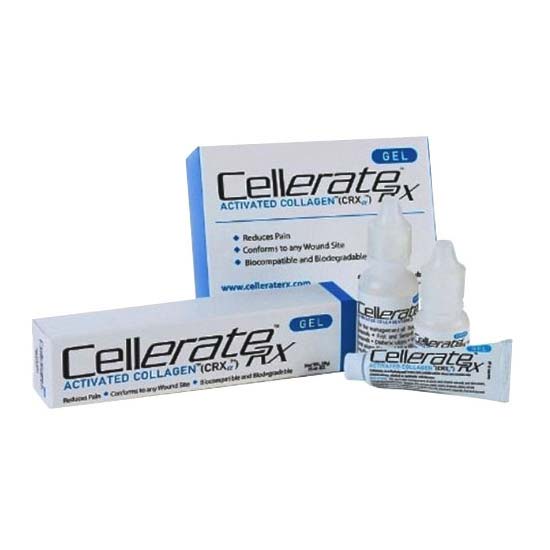Wound healing is a crucial aspect of healthcare, particularly for individuals with chronic wounds, surgical incisions, or injuries requiring accelerated tissue repair. Cellerate is an advanced wound care product designed to enhance the healing process through its unique collagen-based formula. This article explores the uses, benefits, and effectiveness of Cellerate in various medical and clinical applications.
What is Cellerate?
Cellerate is a medical-grade collagen product designed to aid in wound healing and tissue regeneration. It contains activated collagen fragments that work to accelerate the body’s natural healing process. Unlike traditional collagen products, Cellerate’s patented hydrolyzed collagen technology allows for faster absorption and utilization by the body, making it particularly effective in managing wounds of various types and severities.
Cellerate is available in different formulations, including powder and gel, allowing for flexibility in its application based on the nature and severity of the wound.
Primary Uses of Cellerate
1. Chronic Wound Management
Cellerate is highly beneficial for patients suffering from chronic wounds, such as:
- Diabetic ulcers – Diabetic patients often struggle with slow-healing ulcers due to poor circulation and neuropathy. Cellerate helps to promote faster tissue repair and reduce the risk of infection.
- Venous stasis ulcers – These ulcers are caused by poor blood flow in the lower extremities and can take a long time to heal. The collagen in Cellerate helps accelerate the wound closure process.
- Pressure ulcers (bedsores) – Patients who are bedridden or have limited mobility are prone to pressure ulcers. Cellerate’s ability to enhance cell regeneration makes it a preferred option for treating these wounds.
2. Post-Surgical Wound Care
Surgical wounds require careful management to prevent infection and promote optimal healing. Cellerate can be applied to:
- Incision sites – It helps reduce inflammation and encourages faster healing.
- Skin grafts and donor sites – Cellerate supports the integration of grafts into the wound bed and speeds up the healing of donor sites.
- Traumatic injuries – Deep cuts, abrasions, and degloving injuries can benefit from Cellerate’s wound-healing properties.
3. Burns and Skin Injuries
Burn wounds pose unique challenges in wound care due to the loss of skin integrity and a high risk of infection. Cellerate’s hydrolyzed collagen plays a significant role in:
- Promoting new tissue growth – It supports the regrowth of skin in second-degree and minor third-degree burns.
- Reducing pain and inflammation – The bioactive collagen helps soothe damaged tissue and decrease discomfort.
- Minimizing scarring – Collagen enhances skin elasticity, reducing the appearance of scars over time.
4. Wound Healing in Elderly Patients
Elderly individuals often experience delayed wound healing due to age-related physiological changes. Cellerate assists in:
- Boosting collagen production – Older adults produce less collagen naturally, so using Cellerate helps replenish this essential protein.
- Improving hydration in the wound bed – It creates a favorable environment for cell migration and wound closure.
- Reducing infection risk – The antimicrobial properties of Cellerate prevent bacterial colonization.
5. Sports and Trauma Injuries
Athletes and active individuals frequently encounter cuts, abrasions, and soft tissue injuries. Cellerate is effective for:
- Treating lacerations and abrasions – It helps close wounds quickly while reducing inflammation.
- Healing tendon and ligament injuries – The collagen supports connective tissue repair.
- Managing blisters and minor burns – It provides relief and speeds up skin regeneration.
6. Veterinary Applications
Cellerate is not only used in human medicine but also in veterinary care for animals with wounds. It can be applied to:
- Surgical wounds in pets – It helps post-surgery healing in dogs, cats, and other animals.
- Injuries in horses and livestock – Cellerate is often used in equine medicine to treat wounds in horses, including leg abrasions and lacerations.
- Skin infections and ulcers – It assists in managing chronic skin issues in animals.
How Cellerate Works
Cellerate’s effectiveness is attributed to its hydrolyzed collagen technology, which works in the following ways:
- Stimulates Cellular Activity – The collagen fragments penetrate the wound bed and encourage fibroblast proliferation, which is essential for tissue repair.
- Enhances Moisture Retention – By maintaining a moist wound environment, Cellerate prevents tissue dehydration and promotes faster healing.
- Reduces Inflammation and Pain – It soothes the wound area, minimizing swelling and discomfort.
- Supports Angiogenesis – The formation of new blood vessels ensures that the wound receives adequate oxygen and nutrients for optimal recovery.
Advantages of Cellerate Over Traditional Wound Care Products
- Faster Absorption – Unlike standard collagen dressings, Cellerate is hydrolyzed, meaning the body can absorb and utilize it more efficiently.
- Longer Shelf Life – The product remains stable over time and does not require refrigeration.
- Minimal Side Effects – Since it is derived from natural collagen, the risk of allergic reactions is low.
- Easy Application – Available in powder and gel forms, Cellerate is simple to apply in both clinical and home settings.
Cellerate is a revolutionary wound care product that offers significant benefits in various medical and veterinary applications. Its ability to accelerate healing, reduce inflammation, and promote tissue regeneration makes it an essential tool for wound management in both acute and chronic cases. Whether used for post-surgical wounds, burns, ulcers, or sports injuries, Cellerate provides a reliable and effective solution for enhanced healing. With continued advancements in wound care technology, products like Cellerate are shaping the future of regenerative medicine, offering hope for faster recovery and improved patient outcomes.
The content is intended to augment, not replace, information provided by your clinician. It is not intended nor implied to be a substitute for professional medical advice. Reading this information does not create or replace a doctor-patient relationship or consultation. If required, please contact your doctor or other health care provider to assist you in interpreting any of this information, or in applying the information to your individual needs.



